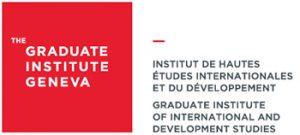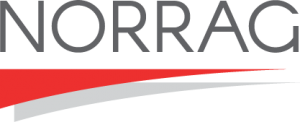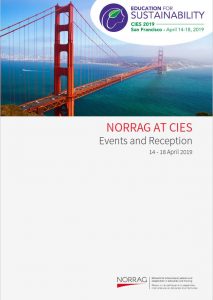Event highlights: “Disruption” and the Implications for Education Philanthropy
As part of the Philanthropy in Education (PiE) series of symposia, The Graduate Institute of International and Development Studies (IHEID) and NORRAG in collaboration with the Open Society Foundations (OSF), the Sheikh Saud bin Saqr Al Qasimi Foundation for Policy Research and the Stanford Center on Philanthropy and Civil Society (PACS), organized two related events in the US San Francisco bay area in April 2019. The first was a set of two panels at the Comparative and International Education Society (CIES) annual conference on April 16, and the second a symposium on April 19th at Stanford PACS in Palo Alto, CA. Some 100 scholars and practitioners participated in a series of conversations over the week based on research, analysis and case studies around the influence of contemporary Silicon Valley philanthropists’ aims and practices. Presenters sought to draw out the implications of emerging trends for education and development globally. Here follows a brief recapitulation of the presentations and takeaways.
CIES Panels, San Francisco, CA April 16, 2019
For CIES, panelists analyzed the features and influence of the emerging philanthropic giving in education, both domestically in the US and internationally (program here).
In the first panel Megan Haggerty, Coordinator, International Education Funders Group focused her remarks on the diversity of philanthropic styles of giving, with the Silicon Valley philanthropists as only one model. Members of IEFG (including some from the Silicon Valley philosophy), work in developing countries and in the global education agenda space, focusing on everything from building civil society, to strengthening data or forming policy networks, to funding basic research. While noting that more attention should be paid to transparency and accountability in philanthropy, she cautioned that a critical examination of the sector should not disregard nor forget the less sensational contributions of the sector in building education systems. She stressed what would become a recurring complementary theme through the panels and symposium, that there is a strong and growing constituency of donors whose motivations and giving styles are very diverse, stemming from personal experience and values.
Lara Patil of NORRAG provided an overview, based on long academic and professional experience with technology industry giving, of both the fertile ground from which dedication to disruption emerges and some of the consequences in terms of desired outcomes on the part of philanthropists whose fortunes come from the technology sector. She illustrated how the ‘donor logic’ of transnational technology corporation giving includes its looking for parallel strategic opportunities for market development and brand recognition. For example, the large philanthropies and their founders often use strategies and mechanisms that are techno-centric and hacker, “living” and hands on, and focused on metrics, data-driven results and direct policy advocacy.
Marina Avelar of NORRAG used her research on new philanthropy in Brazil to problematize and theorize on how some major philanthropies there and elsewhere use multiple and overlapping networks to mobilize knowledge and influence for agendas that generally involve some degree of weakening the public sector. They create and use research and data to broaden their impact through collaboration, networking and innovating their methods and objectives, based on evolving theories of change.
Karen Mundy, until recently at the Global Partnership for Education took a more sanguine view in her role as discussant, feeling that in the desire to differentiate and take a critical look at current trends compared to, say, the first half of the twentieth century, analysts are missing important constant themes: the desire to ascribe agency and therefore attach personal identity to certain types of giving or programmes, the desire for autonomy from government, the appropriation of the notion of the right to fail, and the ambition to be strategic in goals and giving.
In the second panel, Hugh McLean of the Open Society Foundations took on the notion of disruption according to business theory, meaning the capture of market share through entry by means of unexplored potential demand, and invited participants to reflect on how this could apply to some kinds of philanthropy. This could help shed light on the objectives, standards for determining the success (or lack of it) of interventions, and the power structures involved. He emphasized that misunderstanding of the concept of disruption could spill over into unwarranted suspicion of both motives and outcomes.
Kathryn Moeller, Visiting Assistant Professor, Stanford University and Rebecca Tarlau, Assistant Professor, Pennsylvania State University, introduced and explored a notion of “philanthropizing consent” whereby philanthropic organizations in Brazil in the period 2015-2017 achieved rapid momentum in popularizing among the public, policy actors and the teaching profession the idea of a need for the creation of national learning standards and a national curriculum. The result is to create and support a new vision and agenda for education rather than to influence specific actions.
Tyler Hook, the University of Wisconsin-Madison, used work on his dissertation to examine how the rapid privatization of primary schooling in Liberia, accomplished with the aid of philanthropic organizations, led to changes in power structures that, while contributing to some gains in student performance, also resulted in unclear and unequal benefits for both families and learners, while relying on an increasingly precarious and de-professionalized school labor force. Launched in 2016, the Partnership Schools for Liberia (PSL) pilot, later renamed Liberia Education Advancement Program (LEAP), is emblematic of the new forms of philanthropy based on disruption and competition.
The discussant, Lara Patil of NORRAG, highlighted some connections between panel presentations, that all pointed to the ‘disruptive’ business motivations and rationales of emerging actors and the speed and efficiency of enacting and scaling strategies, often before outcomes are clear. As many governments renegotiate the social contract with the people, and welcome private sector provision of social services through competition, the role of democratic oversight and, at times, push back from civil society becomes crucial.
Key takeaways from the discussion included questions about the often-critical analyses of “new” philanthropy and its perceived structural impact. Old philanthropy and new philanthropy might have more in common that contemporary analysis tends to highlight. Some observers also point to ways in which “old” philanthropy evolving to a contemporary model that is more hands-on, policy-oriented, results and metrics-based, and finally less complementary to than competitive to states. On another note, whereas in simple volume philanthropy is dwarfed by public spending and development assistance, assessments differ as to its impact on institutional change and innovation.
Stanford PACS Symposium, Stanford University, Palo Alto, CA April 19, 2019
The regional Philanthropy in Education international education symposium, Silicon Valley Philanthropy: ‘Disruption’ and the Implications for Educational Development was held to illuminate a new style of philanthropy emerging from Silicon Valley (program here). With technological innovation as the core influence that created much of the wealth driving the new philanthropy, it is no surprise that disruption, innovation and impact are the center of an emerging ‘giving code’.
As highlighted in the welcome remarks, individual technology philanthropists and transnational technology corporations are powerful new actors in international educational development. There is demand for deeper collective knowledge about trends, motivations, rationales and outcomes of their actions and influence.
At Stanford PACS, its Executive Director, Kim Meredith, presented and situated PACS as a locus of knowledge creation around philanthropy in the US and its actors. Among its many goals are the expansion of research, creation of robust data, building of community, and encouraging innovation. She stressed that although the amounts of philanthropic giving are increasing, they remain stable against GDP. She also stressed that 80% of philanthropic giving comes from individuals. She touched on a few burning topics: new types of philanthropy that are testing regulatory mechanisms, the need for ethical use of data, and the difficulty for both donors and recipients around the desire for multi-year funding.
See Kim Meredith presentation
Kate Wilkinson, Director of Open Impact and co-author of The Giving Journey began with an overview of giving in Silicon Valley, based on the Giving Code report published in 2016. Her summary of the local context provided background for the insights developed in the research for the Giving Journey – a report that outlines the motivations and barriers of philanthropists during their philanthropic journey. Kate’s presentation affirmed that several key barriers exist for philanthropists, including knowledge, experience, and relationships. She discussed some ways nonprofit organizations can address those barriers and provide philanthropists with on-ramps to giving, including translating from the language of “social impact” to the language of business, leveraging peer networks for learning, and starting with relationships rather than transactions.
Michelle Holmes, International Director of the Atlassian Foundation, described the Pledge 1% Movement, which Atlassian co-founded alongside Salesforce, and has grown to a movement of over 9,000 companies committing to “give back 1% of equity, profit, product, and/or employee time for charitable purposes. The Atlassian Foundation is focused on maximizing its impact through education and has set the goal of helping to educate ten million youth in the next ten years, preparing them for the workforce of the future. She spoke to Atlassian’s journey from its Founders’ initial pledge of “1% of hopes and dreams” to its current efforts to strategically deploy its 1% of equity, profit, product, and employee time to support both the innovation and ecosystem necessary for change in global education. She noted shared patterns that she has seen across companies as they begin to build their philanthropic giving, including limited in-house development sector expertise and opportunities and challenges around employee engagement (particularly skilled volunteering).
see Michelle Holmes presentation
Dana Brakman Reiser Professor and Visiting Professor of Brooklyn Law School and Fordham University School of Law respectively, has a professional focus on the legal and regulatory issues in the United States that arise as “practices, players and norms native to the for-profit sector migrate into philanthropy”. The limited liability company (LLC) model as pioneered by the Zuckerbergs has some tax disadvantages for the founders that can likely be substantially offset with strategic planning, and offers philanthropists more flexibility, privacy and control that traditional foundation forms. The main concerns from the public policy perspective arise from LLC’s lack of transparency and public accountability. Similarly, donor-advised funds (DAFs) that aggregate donors but allow flexibility of spending according to donor wishes, approximate foundation benefits while providing far fewer obligations for transparency.
See Dana Brakman Reiser presentation.
Hugh McLean, Director of the Education Support Programme of the Open Society Foundations, made a distinction between philanthropists focused primarily on social responsibility by tackling issues such as inclusion, strengthening civil society, social justice. The newer philanthropies that adopt a more entrepreneurial model tend to aim at shaping education to fit technology- and business-based approaches to problem-solving, including accepting the notion of “the right to fail” and profit-based social engineering.
See Hugh McLean presentation.
In her presentation, Megan Tompkins-Stange, Assistant Professor at the University of Michigan, focused on her recent research on philanthropic support to charter schools in California as a case example of rising funding to entrepreneurial institutions. This funding tends to favour growth and scale as the levers for impact and systems change. Monitoring leans heavily on metrics and milestones, as donors seek “tipping points” that can take change to scale. Funders undertake various initiatives to create and strengthen professional support networks.
Patricia Bromley, Assistant Professor at Stanford University, as discussant, pointed out that the presentations so far illustrate how education reflects society at least as much as it changes it, spurring parallel conversations about emerging trends. There is more contemporary incursion for provision of education of the private sector into the public and non-profit spheres, but also more backlash against neoliberal ideology and practice. We can question why it is that business and competitive practices are becoming more tolerated in education now, rather than a decade ago.
Christopher Lubienski, Professor at the University of Indiana, provided an overview of the logic and approach of some of the biggest donors concerning the value and organization of schooling. All aim for achieving strategic policy formation in various ways, through corporate philanthropy or non-profit entities created by corporate executives. There is a focus amongst the biggest donors on business logic, incentivizing individual initiative (charter schools), and providing alternatives to public schooling, which implicitly formulates schooling as a private, consumer good. Most donors articulate a fairly consistent narrative about the weaknesses of public education, the value of business models in the provision of education, and very limited interest in regulation. Private sector tries to influence policy, often through philanthropy.
See Christopher Lubienski presentation.
Marina Avelar of NORRAG gave an overview of the philanthropic landscape in Brazil using the analysis of the Silicon Valley investors reflected in the giving code. Her research shows that the big philanthropies in Brazil overwhelmingly care about and invest in influencing policy with their programming and adopt approaches that can be aimed at bypassing public education to disrupt, displace or reform how the state works. While there is a great deal of space for innovation in which philanthropies can have useful roles, there is also opacity in how most foundations work as well as shift in the power relationships within the policy space.
See Marina Avelar presentation.
Karen Mundy, Professor at the University of Toronto, invited participants to step back and examine the underlying assumptions about and challenges to the world order that are affecting both visions and practice of educational reform. Shifts in economic power are reflected by increasing weaknesses of global governance, changing patterns of inequality and increasing differentiation of education. These shifts are also reflected in philanthropy. She pointed to two somewhat competing visions of reforms: one based on inclusivity and quality, the other based on competition, incentives and rewards. In this context a space is being created that assumes partnership with the private sector as integral to a reformed aid architecture. However, results have so far been weak. She concluded with three questions: what are the comparative advantages of philanthropies in this new landscape; how can evidence be used to prepare both the long- and the shorter-term; and what types of coordination would be fruitful and possible between actors?
See Karen Mundy presentation
Ian MacPherson, Lead, Knowledge and Innovation Exchange (KIX) at the Global Partnership for Education, as discussant, highlighted the role of edu-philanthropists (especially in the U.S.) in framing education as a private, positional good, and the ensuing competitive approaches to provision. He pointed out that Lubienski’s presentation presents mind-bending implications for education in the US and beyond, when edu-philanthropists (casting themselves as impact investors) are contributing to creating alternatives for “consumers”. This frames education as a positional rather than a public good, reinforcing the notion of competition. The Bridge example described by Hook is a consequential example of the reconfiguring of the state from a provider to that of an enabler of a competitive market. With the assent of international organizations, there is also a strong philanthropic trend to treating giving as an investment, and to attempting to move from supporting specific actions to effecting structural change. We also see focus, therefore, on measurement, the use of technology in education, and outcomes.
There were rich and productive discussions throughout the day. Take-aways include emphasis of all presenters and participants on the diversity of motivations and styles of philanthropy (including the new philanthropy), the desire for stronger networking between scholars and practitioners, a need to learn more about sustainability of giving programmes, more bottom-up needs identification, and of course, practitioner-scholar collaboration concerning programming, research and standards.
Next steps
The outcomes of the panels and symposium will be a publication in a special issue series that will include presentations and additional short papers on the topic of philanthropy and education. All participants will have the option to contribute to the NORRAG Special Issue no. 4 2020. A broader call for papers for NSI 04 was issued in August with a deadline of October 25, 2019. Through the international research symposium and special issues publication, the organizing partners expect to further the dialogue and enhance research on philanthropy and education. Other edited videos from the Symposium at Stanford PACS will be made available in the near future on the NORRAG website.
Programmes
See the programme of the PiE event at Stanford PACS.
Download NORRAG Programme at CIES
NORRAG Members Highlighted Sessions
Partners







